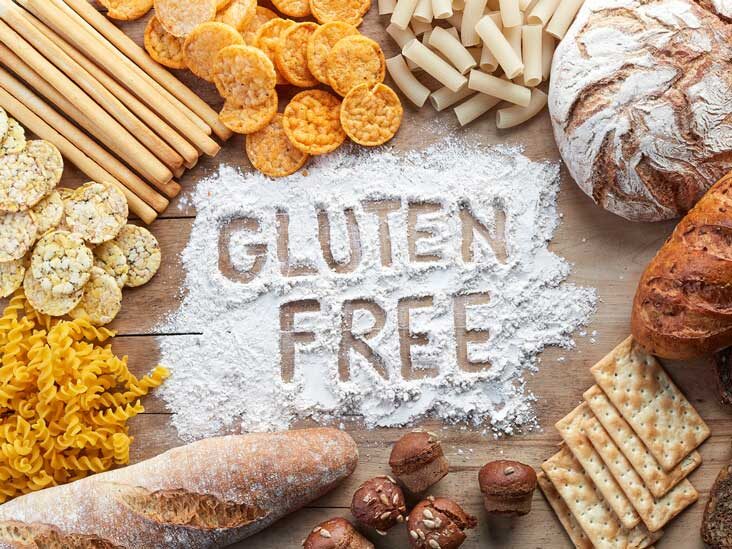For almost a decade, scientists at the University of the Basque Country have been testing different types of gluten-free products to figure out if they lack nutrition.
Celiac disease is becoming more common these days. Scientists think that this could be because of the environment and doctors diagnosing it better. It’s important to remember that gluten can cause many different kinds of sicknesses and not just celiac disease.
A lot of people think that eating gluten-free is the healthier choice, but it’s actually wrong to think like this. In reality, following a gluten-free diet can even be bad for you. This has become an issue due to the recent increase in celiac disease cases having increased peoples’ attention.
Jonatan Miranda-Gómez, a pharmacist and researcher at the UPV/EHU Gluten 3S research group, said that gluten-free products are not healthier even though they have certain characteristics. This group is responsible for giving out the ISO seal which verifies that the product is actually gluten-free.
Miranda’s team has been studying and looking at different gluten-free foods for a long time. In 2014 Miranda made an important discovery and released a paper on it. In the paper, she compared two hundred gluten-free products to the same products with gluten and found that nutritionally they weren’t equal.
Many gluten-free products have higher levels of unhealthy fats, lower fiber content, and different amounts of salt and protein than products that contain gluten. But things are changing! A new study has just been published in Foods magazine.
Table of Contents
Understanding the Growing Gluten-Free Food Industry

About 1% of people have celiac disease, and when you add in those who experience issues with gluten but don’t necessarily have an official diagnosis, the number goes up to 10%. So around one in ten people have problems with gluten.
Miranda said the industry had produced more products, which allowed them to look into other factors too. This led to an improvement in the industry, and it evolved too. Overall, there has been a huge growth in the industry.
Pasta is a good example to look at. Gluten-free pasta is not made with wheat because of the gluten content, instead it is made with maize (corn) flour. Plus, this has been the same for nine years! The main difference now compared to before is that instead of using rice flour as the second main ingredient like before, most people now use millet.
“Miranda said that having millet in pasta is really good for nutrition because it requires less oil to make. Also, the laws have changed and now there are different ingredients used in making pasta.”
When it comes to products that aren’t solid, producers have to come up with different strategies. For example, beer. Instead of taking out the gluten, they add a special kind of enzyme when they are clarifying (or cleaning) the beer so that the gluten gets broken down into smaller pieces.
Miranda said there was one more issue. Sometimes, people in the Celiac Association complained that even though the beer said it was gluten-free, it still made them feel bad. So scientists had to do new research to figure out why this happened.
Miranda is concerned about a wide problem. Recent articles demonstrate that substances besides gluten might be hazardous and if you follow a gluten-free diet, these gluten-free items can still make you feel bad.
Miranda mentioned that they want to research the environmental effects of gluten-free food. She said that, compared to other kinds of food, gluten-free foods have a much bigger impact on the environment since some ingredients in it need to be imported from far away places. One example is millet which needs to be carefully sourced in order to reduce its environmental impact.
These scientists wrote a study about how air pollution may be connected to eye health. They also looked at two cases of propionic acidemia, which is a type of genetic condition.
Frequently Asked Questions About Gluten-Free Products
What can gluten-free people not eat?
Gluten-free people cannot eat any foods containing wheat, barley, rye, and sometimes oats. This includes bread, pasta, cereals, pizza crust, cookies, cakes, pastries, and many other grain-based foods. It also includes foods that may have gluten as an ingredient, such as soy sauce, certain salad dressings, some condiments, and beer.
Do potatoes have gluten?
No, potatoes do not contain gluten.
What does gluten do to your body?
Gluten is a protein found in wheat, barley, and rye. It can cause an immune reaction in people who have an intolerance or sensitivity to it. When gluten is consumed, it can cause a range of symptoms including abdominal pain, bloating, fatigue, headaches, and even depression. People with celiac disease, an autoimmune disorder, must avoid gluten entirely. In some cases, even small amounts of gluten can cause a reaction.
Does mayonnaise have gluten?
No, mayonnaise does not contain gluten.
What is gluten-free?
Gluten-free is a diet that excludes the protein gluten, which is found in grains such as wheat, barley, and rye. People on a gluten-free diet must avoid foods that contain gluten, such as breads, pastas, and cereals. People with celiac disease, gluten sensitivity, or wheat allergy are often advised to follow a gluten-free diet.
Is rice gluten-free?
Yes, rice is gluten-free.


